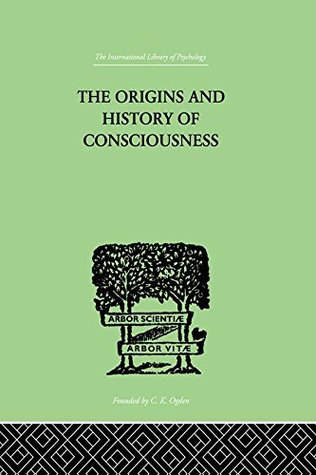More on this book
Community
Kindle Notes & Highlights
Started reading
March 21, 2019
they stand in an organs relation to one another,
Normally the archetypal stages are lived through without disturbance, and the development of consciousness proceeds in them just as naturally as physical development proceeds in the stages of bodily maturation.
the relativity of the eternal image to the evolving ego consciousness becomes more and more pronounced.
the human psyche is the source of all cultural and religious phenomena.
we can follow the continuous, though often fitful, development of consciousness over the last ten thousand years.
stadial
The individual is the bearer of this creative activity of the mind and therefore remains the decisive factor in all future Western developments.
Transpersonal factors,
are collective, supra- or extrapersonal, and are to be regarded not as external conditions of society, but as internal structural elements.
recapitulation
concomitants.
expound
imperative to draw the relevant material from different spheres of culture and different mythologies, irrespective of whether or not all stages are present in any one culture.5
only by viewing the collective stratification of human development together with the individual stratification of conscious development can we arrive at an understanding of psychic development in general, and individual development in particular.
there has been no scientific proof of the inheritance of acquired characteristics.
priori
bourgeois
collective problems constantly appear as the basic problems of human existence
Consciousness thus acquires images (Bilder) and education (Bildung),
the false, personalistic interpretation of everything psychic is the expression of an unconscious law which has everywhere constrained modern man to misinterpret his true role and significance.
“law of secondary personalization.”
constellates
health only when the psyche is itself regarded suprapersonally,
It has to correct and prevent the dislocation of collective life, of the group, by applying its specific points of view.9
mythology is seen as the unconscious self-delineation of the growth of consciousness in man.
nascent
The beginning can be laid hold of in two “places”: it can be conceived in the life of mankind as the earliest dawn of human history, and in the life of the individual as the earliest dawn of childhood.
stages of mythological consciousness the first thing to be discovered is subjective reality, the formation of the ego and individuality.
discursive
The symbolic story of the beginning, which speaks to us from the mythology of all ages, is the attempt made by man’s childlike, prescientific consciousness to master problems and enigmas which are mostly beyond the grasp of even our developed modern consciousness.
epistemological
it is the fateful question “Where did I come from?” that faces every human being as soon as he arrives upon the threshold of self-consciousness.
The statement of identity and the logic of consciousness erected upon it have no value for the psyche and the unconscious.
demiurge
calabash
yet nothing has come between them to create duality out of the original unity.
purusha
(Atman)
autarchic.
’Oυϱóβοϱος.
Mandaeans
Kneph
Gnostics
syncretists;
Images and symbols have this advantage over the paradoxical philosophical formulations of infinite unity and unimaged wholeness, that their unity can be seen and grasped as a unity at one glance.
It functions as a transpersonal factor that was there as a psychic stage of being before the formation of an ego. Moreover, its reality is re-experienced in every early childhood, and the child’s personal experience of this pre-ego stage retraces the old track trodden by humanity.
wu chi
The answer is: the round, and the two interpretations: the womb and the parents.
Mythology, however, is the product of the collective unconscious, and anyone acquainted with primitive psychology must stand amazed at the unconscious wisdom which rises up from the depths of the human psyche in answer to these unconscious questions.


